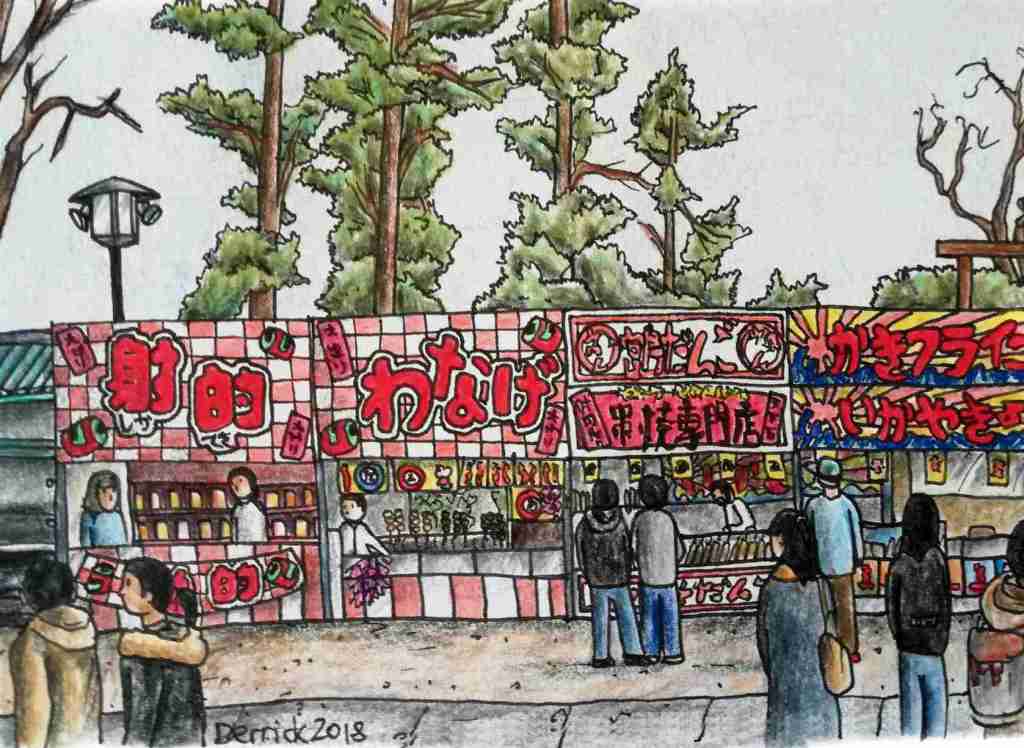One of Tokyo’s most striking contrasts between modernity and tradition, Hanazono Jinja is a 17th-century Shinto shrine located right in the heart of Shinjuku. Surrounded by modern buildings and skyscrapers all around, the shrine is one of Tokyo’s most important religious and historical buildings.
Hanazono Jinja is dedicated to Inari Ōkami, the kami (divine spirit) of foxes, fertility, rice, tea, and sake, and worldly success that includes industry and agriculture. It is a popular place for businessmen to pray for success, as well as a peaceful and quiet oasis in the heart of one of Tokyo’s busiest areas.

Features of Hanazono Jinja
Hanazono Jinja main shrine hall (honden), originally made of wood but rebuilt from its original form in concrete, retains its dozo-zukuri style. It is open for all visitors. The honden stands atop a raised platform with stairs leading to a courtyard and garden. The gardens are particularly popular in March and April, when the cherry blossoms on the grounds are in full bloom.
Around it are smaller shrines, including the Itoku Inari fox shrine, and the Geino Asama shrine, dedicated to performing arts. One notable bronze statue is karajishi-zo, designated a tangible cultural property by the city.
History of Hanazono Jinja
The exact date that Hanazono Jinja was built is unknown, but it first appears in writings in 1590, before the Edo period. This was the period that Ieyasu Tokugawa took control of Tokyo (then known as Edo).
The original shrine was located several hundred metres from its present site, on the grounds that are now occupied by the Isetan Department Store. One of the shōgun’s vassals, the lord Asakura, required the land of the shrine to build his residence. So, the current iteration we see today was constructed on a flower garden owned by the Owari samurai clan. The name Hanazono itself translates to ‘flower garden’.
In the Edo period, Shinjuku was a shukuba (poststation, or waystation on the road to Edo), far from the centre of the city of Edo. As the country populated, the city began to grow around the shrine. Restaurants, kabuki entertainment centres, and brothels rose up in the Shinjuku area. Edo-era Shinjuku, as a waystation frequented by traders, prayed for business success at Hanazono Jinja. But it also saw tragedies – made of wood, the shrine burned down at least twice, in 1780 and 1811.
Hanazono Jinja did not survive the massive WW2 Tokyo air raids in 1945, which flattened 90% of Shinjuku structures. While the area redeveloped as a high-rise commercial centre, the shrine remained true to its past form when it was rebuilt in 1965, surrounded by modern Tokyo. Some elements, such as the komainu (lion-dog statues) at the entrance are originals which survived the bombing.
Festivals of Hanazono Jinja
There are many notable festivals which take place at Hanazono Jinja. The New Year’s Prayer on New Year’s Eve is one the largest at the shrine.
Reitaisai Festival is perhaps the most important festival held at Hanazono Jinja. It is held in late May, and takes place over 3 days, during which portable shrines (mikoshi) are carried through the streets of Shinjuku, an uncommon occurrence in the streets usually packed with cars. Over 100 booths are erected that sell traditional foods, and sweet treats such as taiyaki and dorayaki.
Another popular festival is the Tori-no-Ichi festival (rooster market), in which the shrine comes alive with paper lanterns and street food stalls. Most Sundays, a flea market is held on the grounds, and the Karakumi theatre company performs at the shrine twice a year.

Finding Hanazono Jinja
One of the joys of visiting the Shinto shrine Hanazono Jinja is locating it. It is easily walkable from Shinjuku station, and from the Kabukicho district. The main entrance to the shrine is via the torii gate on Meiji Dori Avenue.
There are several other access points to Hanazono Jinja, including via alleyways that wind between skyscrapers. One stone torii is between a Family Mart convenience store and Tsukiji Sushiko sushi restaurant.
***
A welcome retreat from the lively streets, offices and restaurants of Shinjuku, Hanazono Jinja is a beautiful and unexpected link to the past. It is worthwhile admiring for locals and visitors alike.